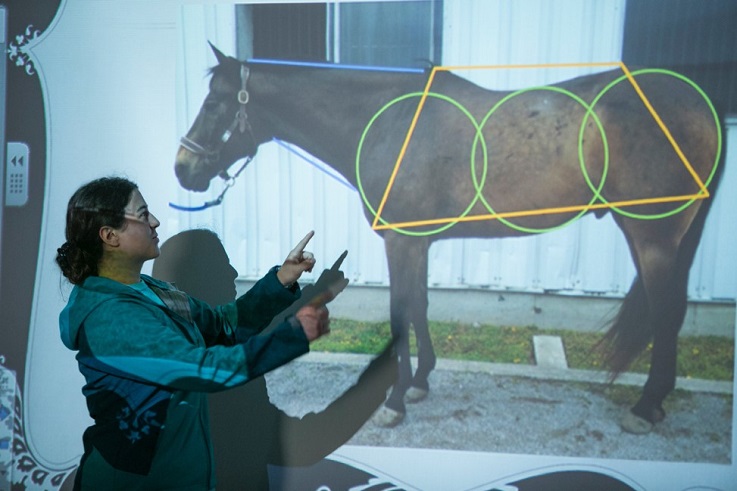Equestrian Teaching Techniques

Think about the great riding instructors and teachers you’ve had throughout your life. Chances are, they gave a lot more thought to how you learn than you knew.
There are so many things to consider when pursuing a career teaching riding and building a riding curriculum — age, specialization area, discipline, ability level, and more.
According to William Woods University Professor and Equestrian Studies Division Chair Jennifer Petterson, teaching techniques courses are an entire sequence for equestrian majors. Several courses in teaching technique help students learn theory, how to identify particular needs and considerations, and how to approach them appropriately.
Teaching Methods I is the lecture course that introduces arching theory, lesson plans and methodology, currently taught by Sarah Track.
Teaching techniques II, III and IV are taught by Sarah Track, Liz Haben, Michele Smith and Karen Pautz. Each discipline has a different instructor.
“These are the courses where the students practice teaching their peers and assisting the instructor,” Petterson said.
Finally, the capstone class, Teaching Methods Seminar is the last class in the sequence, taught by Petterson.
“During this course they begin to define and market themselves as teaching professionals.”
In the book “The Science of Equestrian Sports” author Inga Wolframm focuses the attention on the rider through sport psychology, injury prevention, coaching, horse-rider relationships, and understanding developmental differences and needs of riders — all important things to consider when building a riding curriculum.
“Equestrian coaches and instructors teaching at different levels and across different age groups should be aware of stages of cognitive and emotional development, in particular in their younger clients, and be able to apply pedagogical techniques accordingly… differences in approach that might be required in teaching, for example a 6-year-old as opposed to a 12-year-old.”
The book outlines these stages of development during a child’s sporting career and their specific needs. For example, knowing when to give a child a ‘sampling’ of different disciplines vs. helping an older, committed rider who’s found their favorite specialty.
In a previous post, Look into Equestrian Studies noted the various ways equestrian education is beneficial for kids and youth — such as building confidence, empathy, accountability, and responsibility. We’ve also identified a number of ways kids can get involved, including attending William Woods’ own summer riding program for kids ages 10-18. This year Session 1 (riders ages 14-18) is July 2-7 and Session II (riders ages 10-13) is July 9-14.

